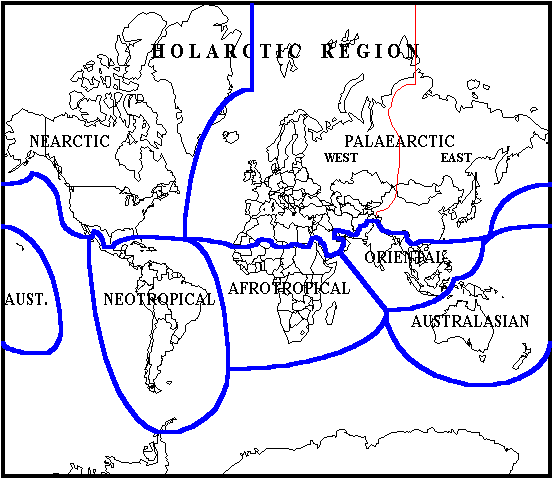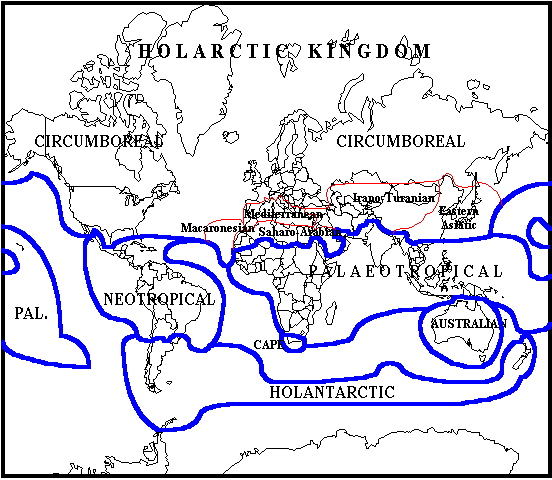This work is a general account of the native and introduced species and subspecies of Saturniidae that occur within the zoogeographical boundaries of the western Palaearctic region.
The western boundary of the western Palaearctic is 40 degrees W (mid-Atlantic), and includes the Azores. The southern boundary runs approximately along 20 degrees N (the southern boundary of the Saharo-Arabian floristic region (Takhtajan, 1986)). The northern limit is 80 degrees N (the Arctic Ocean) and the eastern limit approximately 90 degrees E as far south as the Altai Mountain range (see Map 1). The Russians regard the Yenisey River to be the natural boundary between the eastern and western halves of the Palaearctic region, which approximates to 90 degrees E. De Lattin (1967) agrees with this and accepts the Johannsen line, which follows the Yenisey River except in the far north, where it veers off to 100 degrees E. From the Altai the boundary is less distinct, running south-westwards through the Tian Shan, Pamir, Hindu Kush (de Lattin, 1967) and along the south-eastern edge of the Iran-Afghanistan plateau and thence across the Gulf of Oman to Muscat. The fauna and flora within this natural region forms a recognizable, distinct community governed by distinct climatic parameters (de Lattin, 1967; Takhtajan, 1986).
Map 1: The main zoogeographical regions of the world, with the western palaearctic defined.

The definition in this work of what constitutes the western Palaearctic thus differs somewhat from that in most other works, which have tended to select easily identifiable features such as mountain chains or rivers as boundaries. Europe is a geopolitical entity and of little significance to saturnid ecology. The western Palaearctic, on the other hand, is a distinct biogeographical region with, for the most part, clearly defined boundaries. To the west it is cut off from North America by the vast expanse of the Atlantic Ocean. To the south the hot and dry Sahara desert forms a very effective barrier to all but the most determined Afrotropical species. To the north lie the frozen Arctic wastes, and to the east the vast inhospitable swamps and boreal forests of central Siberia. (The Urals are regarded by many as the natural eastern boundary of the western Palaearctic, but these low mountains do not, in fact, form a very effective barrier). Only to the south-east does the flora and fauna merge with that of the Oriental region along a mountainous boundary which stretches from Afghanistan and Kashmir down through western Pakistan to Baluchistan.
Map 2: Floristic kingdoms of the world (after Takhtajan, 1986; Moore, 1991).

This work covers those saturnids which are resident within the above-mentioned boundaries of the western Palaearctic. It also covers what are clearly Oriental species which penetrate into the warmer areas of Afghanistan and the single Afrotropical species which enters northwest Africa. The mixed fauna of Pakistan is also excluded except for clearly recognizable Palaearctic species whose distribution extends into the cool western and northern highlands of that country.
 Return to species list
Return to species list